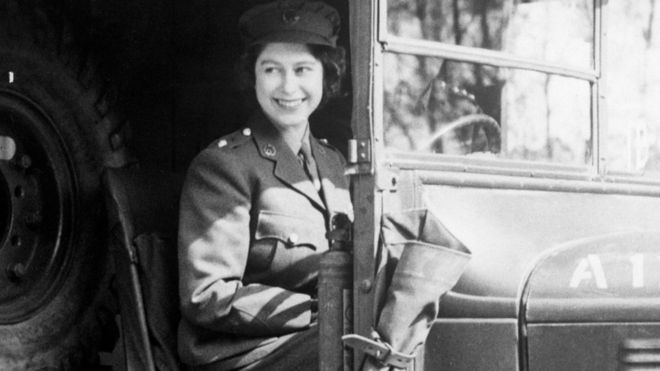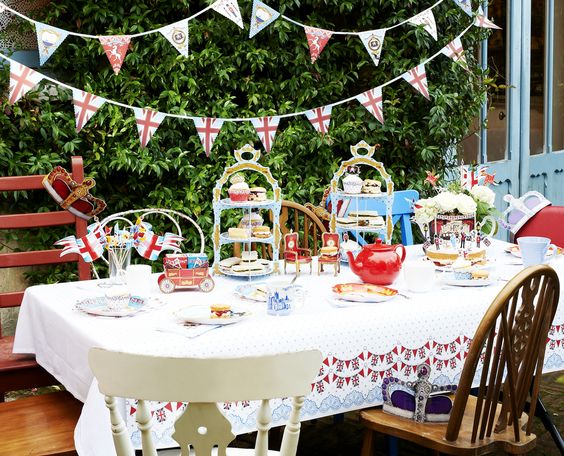Image sourced: https://www.bbc.co.uk/newsround/48201749
The date was 30th April 1945. The allied troops had surrounded Berlin. Leaving the leader of Nazi Germany contemplating what was inevitable defeat. Adolf Hitler commits suicide in an underground bunker leaving his successor to negotiate an end to the war.
In the early hours of the 7th May 1945 Germany’s unconditional surrender to the allies was signed. After almost 6 years, the war in Europe was coming to an end.
On the 8th May 1945 Victory in Europe Day took place. This was a day earlier than planned, but as news spread about Germany’s surrender parties and celebrations started to break out across the UK.
Even though VE Day marked victory for Europe over Germany, it did not mark the end of World War Two. In his VE Day announcement, Winston Churchill said: “We may allow ourselves a brief period of rejoicing, but let us not forget for a moment the toil and efforts that lie ahead.”
Even after 8 May, many soldiers, sailors and pilots were sent to the east to fight against the Japanese, who had not yet surrendered. This came on 14 August 1945, after two atomic bombs were dropped on the Japanese cities of Hiroshima (6 August) and Nagasaki (9 August).
On 15 August 1945, the allies had officially defeated Japan. This date is known as VJ Day.
World War Two was finally over.
Today we celebrate our 75th anniversary. Although many of us had intended to attend the thousands of events that had been scheduled for this date we find ourselves fighting a very different battle.
Now more than ever the pride in being British is as strong now as it was then. So in this week’s edition we have included some suggestions on how to celebrate this historic day from the safety of lockdown! As well as some facts about VE Day for our younger readers!
Some facts about VE Day!

Image sourced: https://www.bbc.co.uk/news/uk-52465997
- 70 million people fought in WWII. The Soviet Union lost 7.5 million soldiers, the most of any country involved in the war. Other major players in the Allied powers saw massive casualties as well. The U.S. lost 400,000, Great Britain lost 330,000, and China lost 2.2 million. Among the Axis powers, the German army saw 3.5 million casualties, Italy lost 77,000 and Japan lost 1.2 million.
- As Winston Churchill announced the end of the war in London, crowds filled the streets from Trafalgar Square up to Buckingham Palace. Princess Elizabeth (now Queen Elizabeth) and her sister Princess Margaret were allowed to leave the palace and celebrate with crowds outside, although they had to do it secretly. The future Queen described it as “one of the most memorable nights of my life”.
- In the U.S., President Harry Truman was celebrating his birthday on V-E Day. He dedicated the victory to the late President Franklin D. Roosevelt, who died one month before the end of the war. Roosevelt helped create the alliance between Britain, the Soviet Union and the U.S., which made it possible to defeat Nazi Germany.
- The Germans’ surrender marked the end of WWII in Europe, but Japan didn’t surrender until Aug. 15, 1945. Their surrender became official on Sept. 2, 1945, which is now celebrated as Victory over Japan Day or V-J Day.
- Technically, WWII still hasn’t ended due to the fact that Russia and Japan never signed a peace treaty to end the Kuril Island dispute. The Kuril Islands are situated in a chain of islands between Russia and Japan. Historically, Japan had ownership of the islands, but Russia took control during WWII. Neither side has ever agreed to sign papers settling the territorial dispute.
- Some Japanese soldiers never got the message that the war was over, including Hiroo Onoda, who was stationed in the Philippines. He hid out, fully armed and ready for battle, until 1974 when he was discovered. Onoda refused to surrender until his commanding officer flew to the island and convinced him to.
Ideas on how to celebrate!

Image sourced: https://www.pinterest.co.uk/pin/261631059575311623/
Just because we are in lockdown does not mean we don’t know how to party! Below are some ideas on how to celebrate the 75th anniversary of VE Day well following social distancing!
- The Party! The garden has been a go to for all celebrations through lockdown, so hopefully the weather is great and we can celebrate outdoors! If not, the kitchen will do! If you have a front garden and can keep a safe distance, maybe contact your neighbours and set a time and have a ‘socially distanced’ traditional street party from your own gardens!
- The decorations! As part of home schooling you could set up an arts and crafts / history lesson in the morning and get the kids to make some bunting and posters. To help you out we have included a make your own VE Day flag kit!
- What to wear! Now is the time to dig out your union jack attire that you invested in for the Olympics, the Diamond Jubilee or a Royal wedding! If you are less prepared like myself try and build your own patriotic look using red, white and blue clothing!
- The playlist! With the wonders of the internet you don’t have to go far to be able to listen to some nostalgic war time classics to make this day really authentic! Have a search on music sites for some playlists! If you would like more modern music, stick with the theme and listen to the best of British artists!
- The food! Back in 1945 wartime rationing meant sugar, butter and meat were hard to come by, so sweets, chocolate and traditional cakes were unlikely. If you are wanting to simulate this the buffets that filled the street tables would have included dripping sandwiches, corned beef hash, faggots and eggless fruit cakes! If like me your children would be less than enthusiastic for a dripping sandwich we suggest basic British classics such as jam sandwiches, scones and pork pies!
You now have a great day ahead of you. There is no better way to show your pride for Britain right now than to celebrate such a historic and euphoric day from our past!






